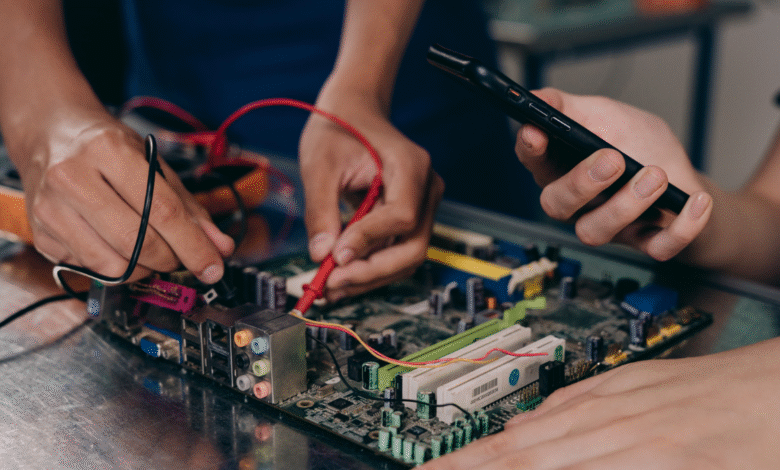The Full Guide to Meshmixer All You Need to Know as a Beginner in 3D Modeling and Printing

For those who want to start 3D modeling and printing, a great starting point is Meshmixer. It is a free offering from Autodesk, and its interface is user-friendly as well as great for editing, sculpting, and model preparation, especially for 3D printing. No matter if you are a hobbyist or professional, Autodesk Meshmixer’ll grant you all the necessary functionality to make model changes and improvements.
In this guide, you will find all the necessary information with respect to Meshmixer, including setting up the model, and the steps for 3D printing. Let’s get started.
What’s Meshmixer used for?
A design program which helps you design a 3D model which you can use for 3D printing is Meshmixer. There is a requirement in sculpting, repairing, and a few 3D design tools needed for 3D designing and all this is combined in the ideal package of Meshmixer. Besides all that, Meshmixer comes at no financial cost.
The following people will benefit from Meshmixer:
- A person who has no experience at all in the world of 3D modeling will find this tool of great help.
- A hobbyist who wants to make changes to a model that already exists.
- Specialists who require an immediate solution for preparing, repairing, or post printing, editing a model.
Begin Your Journey with Meshmixer
Installing Meshmixer
To get started, you need to install Meshmixer first. Here are the steps to follow:
- Go to the official Autodesk website and download the software. It has versions compatible with Windows and macOS.
- Follow the provided instructions to install it.
That’s all! After the installation, launch Meshmixer and you will find a welcoming interface that you will easily navigate as you start editing your 3D models.
Understanding the Interface
Navigating and working with Meshmixer is easier, and the same goes for the interface as it appears neat. Here are its essential features with descriptions:
- Main Workspace: Your 3D model appears here and you will be able to manipulate its positioning through rotation, zooming in and out to get a perfect angle.
- Tool Panels: The editing, sculpting, and analyzing tools for your model are all found in these left-side panels.
- Object Browser: It shows parts, layers, and components of the 3D model allowing for better management of the model in the right sidebar.
You will find the tabs Meshmix, Edit, Sculpt, and Analysis. They are all parts of the interface that help you perform a variety of tasks.
Importing and Preparing Models
Importing 3D Models
Before beginning the editing process, you have to load a 3D model. You either make a model or import one from a different source. Primary file types supported by Meshmixer include .STL, .OBJ, and .PLY.
The process to import a model is:
- Locate the Import button and click on it.
- Locate your model file, and it will show up on the workspace.
Checking For Model Errors
Checking your model’s readiness for editing work is crucial, as it should be triable to some extent. It should be manifold, meaning it should be fully enclosed, without holes or defects.
Meshmixer has an Inspector tool that comes prebuilt with the software which will scan for issues such as holes or non-manifold edges. These issues can be fixed using the Auto Repair All option.
Editing and Sculpting Your Models
The editing phase can commence as soon as you prepare your model. A number of tools for design modification are available on Meshmixer.
Basic editing tools For Editing The Models
- Basic Sculpting: This tool can be used to modify the model’s form. It brings shapes more into accordance with the design.
- Transform: This tool gives you the ability to move your model, rotate or scale it. It is great for changing model orientations and is useful when resizing objects.
- Plane Cut: Need to slice a model in half or make a flat surface? The Plane Cut tool helps you achieve just that. It is useful during precise edits or during parts creation for assembly.
- Hollowing: Want to reduce the amount of material used in a model to save on 3D printing? The Hollow tool can hollow out your model helping you save on printing costs.
Advanced Sculpting
If you wish to enhance your model further, you can make use of additional sculpting tools in Meshmixer to offer more advanced features:
- Sculpt: This tool enables you to sculpt and smooth surfaces in real time. Sculpting tools enable adding further to the surface like wrinkles, textures, and intricate patterns.
- Meshmix: Lets you combine several 3D models into a single model by dragging and dropping parts. You can further combine parts to models in the Meshmixer library offering you a completely new design.
Analyzing Your Model
Checking for Issues
Analyzing 3D models is made even easier in 3D printing with Meshmixer:
- Thickness: This tool measures the distance of your model’s walls. It is useful to measure walls and ensure the creation of a model with thin walls so that weak areas do not occur during the printing process.
- Overhangs: Areas of concern for 3d printing that contain no support under them. Prior to printing, any necessary supports are to be added.
Optimizing Your Model
What to do for a 3d model once it is devoid of errors:
- Solid Geometry: Use the Make Solid function for complex models that need a solid structure.
- Support Structures: For models that contain overhangs, supports need to be added in order for an optimal print. These are easily generated using the support feature in meshmixer.
3d Model preparation
Here are the steps that are to be followed in the meshmixer after a model is edited, in order to prepare the model for 3d printing.
Exporting Your Model
.STL is the most common format used for 3d printing, however meshmixer allows you to export in multiple formats. Follow these steps in order to export:
- Use the top menu export option
- Select STL as the required format
- Store the file in your device.
Printing Settings
Always confirm that your model’s size and orientation fit your printer before printing:
- Scale: You can adjust oversized or undersized models for your printer’s build volume.
- Orientation: Proper model orientation can avoid extra support material.
Practical Uses of Meshmixer
Educational Projects
Because of its ease of use, Meshmixer excels in crafting models in anatomy, architecture, or engineering design for educational use. It helps students grasp concepts by visualizing them in a hands-on manner.
3D Prototyping
Thanks to its features that allow easy modifications, designers and engineers have started to use Meshmixer to prototype and test out new products.
Artistic Creations
With Meshmixer, artists and those passionate about art can design unique pieces such as sculptures, jewelry, and figurines. It is quite straightforward to materialize creative concepts because of the sculpting and mesh-mixing tools.
Conclusion
Whether you are a professional or a novice, Meshmixer is a fantastic tool to have. It has powerful editing and sculpting tools, features for molds, and is easy to use. Additionally, its interface is user friendly. No matter if you are building your first 3D model or working on an elaborate prototype, with Meshmixer’s features, you can ace your work.





